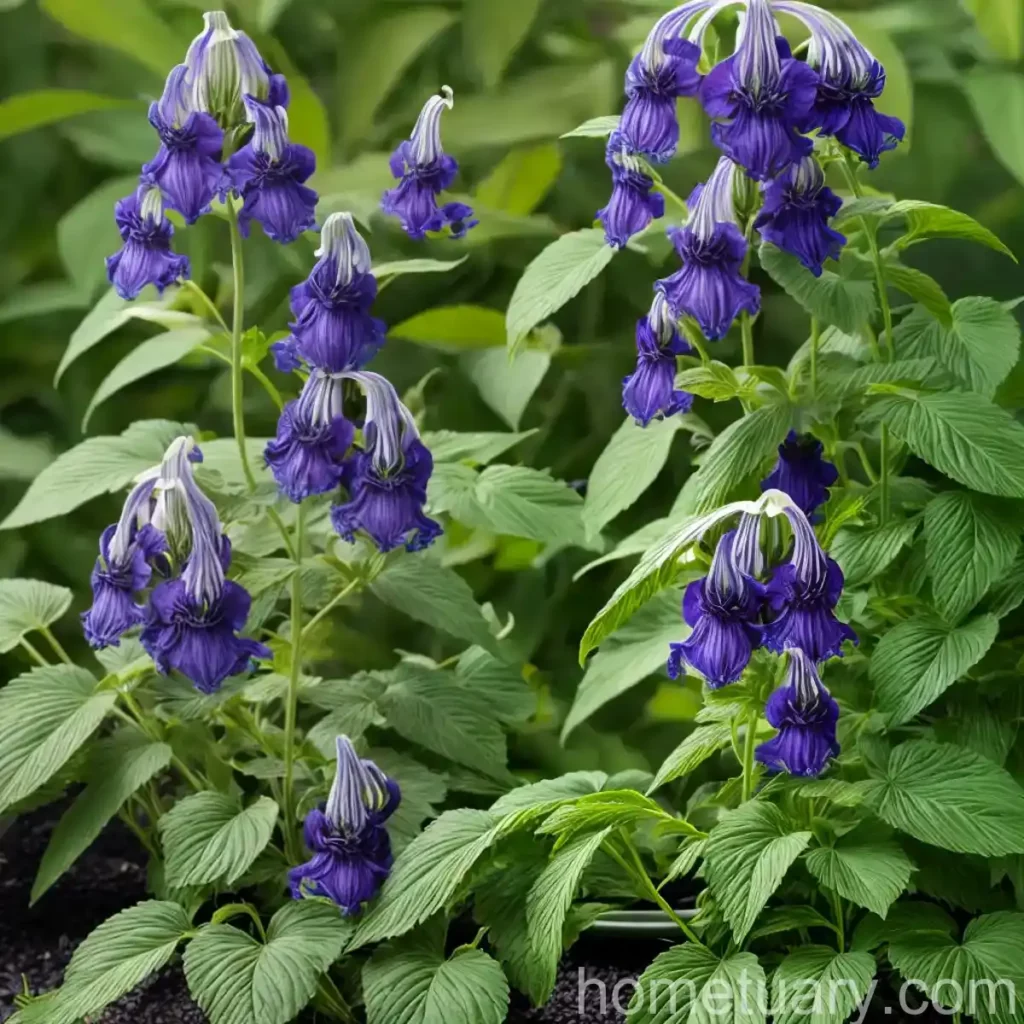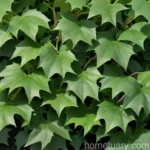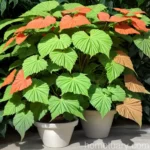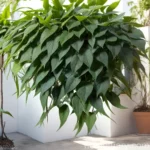The Marvelous Monkshood Vine (Ampelopsis aconitifolia var. glabra)
Introduction
The monkshood vine, scientifically known as Ampelopsis aconitifolia var. glabra, is a delightful and versatile plant that adds aesthetic appeal to any garden. This resilient vine is a member of the Vitaceae family and is native to East Asia, including China and Japan. This blog post aims to provide a comprehensive guide for cultivating monkshood vine, focusing on its cultural requirements, usage, and maintenance, along with tips from botanists and a discussion of common diseases and pests that may affect this plant.
Key Takeaways – Monkshood Vine (Ampelopsis aconitifolia var. glabra)
Before delving into the rich diversity of information associated with monkshood vine, let’s highlight some essential key takeaways about this fascinating plant:
- Ampelopsis aconitifolia var. glabra is a species of vine renowned for its distinctive foliage and charming ornamental qualities.
- The cultural preferences of monkshood vine include moderate watering, partial to full sunlight, well-drained soil, and occasional fertilization.
- This vine features numerous uses, including its benefits as a decorative climber, a source of traditional medicine, and its role in landscape design.
- Regular maintenance, such as pruning and propagation, is crucial for promoting the health and vigor of monkshood vine.
- The plant is susceptible to certain diseases and pest infestations, and proactive management is crucial to ensure its well-being.
Now, let’s embark on a journey to explore the intriguing world of monkshood vine, from its cultural requirements to its botanical characteristics, and uncover the secrets to successfully cultivate and care for this extraordinary plant.
Cultivation of Monkshood Vine
The cultivation of monkshood vine encompasses various aspects such as water, sunlight, fertilizer, soil, pruning, and propagation, each of which plays a crucial role in the plant’s overall health and growth.
Water
Proper watering is essential for the optimal growth and development of monkshood vine. To meet its water needs, it’s important to strike a balance, avoiding both waterlogging and drought stress. The general guideline for watering monkshood vine is to maintain consistently moist soil while ensuring proper drainage to prevent water accumulation around the roots.
Water Needs
- Moderate, consistent watering is crucial for the monkshood vine’s well-being, especially during dry periods.
- Regularly check the soil moisture and adjust the watering frequency according to the plant’s specific requirements.
- Avoid overwatering, which can lead to root rot, and under-watering, which can result in stress and reduced growth.
Sunlight
Monkshood vine typically thrives in partial to full sunlight, making it an excellent choice for outdoor cultivation in moderately sunny locations. Adequate sunlight exposure is essential for promoting lush foliage and robust growth in this versatile vine.
Sunlight Requirements
- Position the monkshood vine in an area that receives partial to full sunlight, ensuring at least 6 hours of sunlight per day.
- Protect the plant from excessive afternoon sun in hotter regions to prevent leaf scorching, particularly during the peak of summer.
- Consider the plant’s natural habitat when determining the ideal sunlight conditions, aiming to replicate its native environment for optimal growth.
Fertilizer
Proper fertilization is vital for supplying essential nutrients to the monkshood vine, supporting its overall vigor and vitality. Selecting a suitable fertilizer and applying it at the right frequency can significantly enhance the plant’s growth and flowering potential.
Fertilizer Requirements
- Use a balanced, slow-release fertilizer with a formulation such as 10-10-10 or 20-20-20 to provide a steady supply of essential nutrients.
- Apply the fertilizer in early spring, following the manufacturer’s instructions regarding the application rate and method.
- Refrain from over-fertilizing, as excessive nutrient levels can lead to foliage burn and other adverse effects on the plant’s health.
Soil
The choice of soil significantly influences the monkshood vine’s health and performance. Well-draining soil with good fertility and a slightly acidic to neutral pH is ideal for facilitating robust growth and minimizing the risk of waterlogged conditions.
Soil Requirements
- Select a well-draining, fertile soil mix that provides adequate aeration and moisture retention.
- Aim for a slightly acidic to neutral soil pH range of 6.0 to 7.0 to create favorable conditions for the plant’s root development and nutrient uptake.
- Incorporate organic matter such as compost or aged manure into the soil to enhance its structure and fertility, promoting optimal growth for the monkshood vine.
Pruning
Regular pruning is a fundamental aspect of monkshood vine care that helps maintain its shape, promote flowering, and manage its growth. Proper pruning techniques and timing are essential for ensuring the plant’s long-term health and aesthetic appeal.
Pruning Techniques
- Prune the monkshood vine in late winter or early spring to remove dead, damaged, or overgrown stems, promoting new growth and enhancing its overall appearance.
- Utilize sharp, sterilized pruning tools to make clean cuts and minimize the risk of introducing diseases or causing unnecessary harm to the plant.
- Regularly inspect the vine for any signs of disease, pest infestations, or structural issues, and promptly address them through targeted pruning as necessary.
Propagation
The propagation of monkshood vine presents an excellent opportunity to expand its presence in the garden or share its beauty with others. Several methods, including stem cuttings and seed propagation, can be utilized to propagate this versatile vine.
Propagation Methods
- Propagate monkshood vine through stem cuttings taken from healthy, mature growth, ensuring the cuttings exhibit strong vigor and disease-free characteristics.
- Prepare a rooting medium using a well-draining soil mix or a combination of peat and perlite to enhance root development and establish successful cuttings.
- Consider seed propagation as an alternative method, collecting ripe seeds from the plant and sowing them in a suitable growing medium to initiate the germination process.
Uses of Monkshood Vine
The monkshood vine boasts a myriad of uses, ranging from its role as an ornamental climber to its traditional medicinal properties and its contribution to landscape design. Understanding the diverse applications of this remarkable plant can inspire greater appreciation for its virtues and potential contributions to various aspects of gardening and well-being.
Decorative Climber
As an ornamental plant, monkshood vine adds a touch of elegance and allure to gardens, pergolas, and trellises, showcasing its distinctive foliage and charming beauty. Its graceful twining habit and lush green leaves make it a captivating choice for vertical accents and decorative features in outdoor spaces.
Traditional Medicine
In traditional medicine, certain parts of the monkshood vine are used for their potential health benefits. While it’s essential to exercise caution and seek professional guidance, some traditional herbal practices utilize specific components of the plant for various remedies and wellness applications.
Landscape Design
Monkshood vine contributes to landscape design by offering vertical interest and architectural appeal. Its ability to cover fences, arbors, and structures with dense foliage and delicate tendrils adds depth and visual appeal to outdoor settings, enhancing the overall aesthetics of garden landscapes.
Common Diseases
Despite its resilience, monkshood vine is susceptible to certain diseases that can compromise its health and appearance. Recognizing the signs and symptoms of common diseases affecting the plant is crucial for implementing timely interventions and preventing the spread of infections.
Disease Diagnosis
Several diseases, including powdery mildew, downy mildew, and leaf spot, can afflict the monkshood vine under unfavorable conditions. Routine monitoring and prompt identification of disease symptoms, such as powdery white growth on the foliage or discolored spots, are essential for accurate diagnosis and effective disease management.
Disease Management
Implementing preventive measures, such as promoting good air circulation, avoiding overhead watering, and applying suitable fungicidal treatments, can help manage and mitigate the impact of diseases on the monkshood vine. Regular inspections and proactive cultural practices can contribute to a healthier growing environment and reduce the risk of disease outbreaks.
Common Pests
In addition to diseases, monkshood vine may encounter pest infestations that can compromise its vitality and aesthetic appeal. Understanding the common pests and their management strategies is vital for safeguarding the plant from potential damage and ensuring its continued well-being.
Pest Identification
Some common pests that may target the monkshood vine include aphids, spider mites, and scale insects, which can sap the plant’s resources and weaken its resilience. Monitoring the plant for signs of pest activity, such as distorted foliage, stippling, or honeydew residue, aids in timely pest identification and intervention.
Pest Management
Employing integrated pest management (IPM) practices, such as introducing natural predators, utilizing insecticidal soaps, and practicing good sanitation, can effectively address pest infestations and minimize their impact on the monkshood vine. Striving for a balanced ecosystem and implementing targeted pest control measures helps maintain the plant’s natural balance and resilience against pests.
Botanist’s Tips
Insights from expert botanists can offer valuable guidance and perspective on cultivating and caring for monkshood vine. Drawing from the expertise of botanists and horticultural specialists provides a deeper understanding of the plant’s unique characteristics and the best practices for its successful cultivation.
Cultivation Tips
- Ensure adequate air circulation to minimize the risk of fungal diseases and enhance the overall health of the monkshood vine.
- Consider the plant’s growth habits and natural tendencies when positioning it in the garden, allowing ample space for its sprawling growth and vertical expansion.
Maintenance Guidelines
- Regularly monitor the monkshood vine for any signs of stress, nutrient deficiencies, or pest-related issues, addressing them proactively to maintain its vitality and vigor.
- Implement a balanced approach to pruning, focusing on removing dead or congested growth while preserving the plant’s natural form and aesthetic appeal.
Fun Facts
Uncovering fascinating and little-known facts about the monkshood vine adds an element of intrigue and fascination to its cultivation. From historical anecdotes to botanical curiosities, exploring the unique aspects of this plant enriches the gardening experience and deepens appreciation for its remarkable qualities.
Historical Significance
- In certain cultures, monkshood vine has held symbolic significance, representing themes such as longevity, resilience, and grace, reflecting the enduring allure of this captivating plant.
Ecological Contributions
- The monkshood vine plays a role in supporting biodiversity by providing shelter and foraging opportunities for birds, pollinators, and beneficial insects, adding ecological value to garden landscapes.
Cultural Heritage
- The plant’s association with traditional medicine and folklore in certain regions underscores its cultural significance and enduring relevance throughout history.
References
[1] Missouri Botanical Garden, “Ampelopsis aconitifolia var. glabra,” Missouri Botanical Garden
[2] North Carolina State University Extension, “Monkshood Vine,” NC State Extension
[3] University of Florida IFAS Extension, “Ampelopsis aconitifolia Monkshood,” University of Florida IFAS Extension
[4] The Ohio State University, “Monkshood Vine,” The Ohio State University
[5] University of California Agriculture and Natural Resources, “Growing Vines: Ampelopsis aconitifolia Monkshood,” UC ANR
[6] Royal Horticultural Society, “Ampelopsis aconitifolia – monkshood vine,” RHS
[7] The Morton Arboretum, “Monkshood Vine,” The Morton Arboretum
[8] Pacific Northwest Plant Disease Management Handbook, “Monkshood (Aconitum spp.) – Diseases,” PNW Disease Management Handbook















